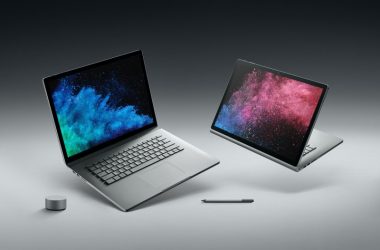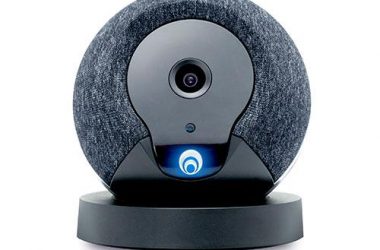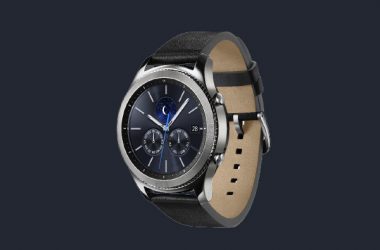 The dirty little secret of iOS remote control devices is that the vast majority of them are terrible. And they are for good reason. Simple as creating a universal remote control may sound, it presents an array of very difficult challenges.
The dirty little secret of iOS remote control devices is that the vast majority of them are terrible. And they are for good reason. Simple as creating a universal remote control may sound, it presents an array of very difficult challenges.
Not only must your device be able to work with countless pieces of audio and video gear, but the remote must be responsive, it should be flexible enough to accommodate the majority of controls offered by your gear, it has to offer workarounds when its database of devices and buttons lacks information about equipment you own, and if it’s not intuitive users will opt for the hardware remotes they currently own or seek out a “real” universal remote rather than an iOS-based solution.
Because making a functional iOS remote is so difficult (and so few examples of good ones exist) I was pleased to find one that mostly works—Peel Technologies’ $99 Peel Universal Remote Control.
The package is made up of three components. The first is the Peel cable. You plug one end of the cable into a power outlet, and the other into a spare ethernet port on your router (the router must be within 25 feet of where you’ll use the Peel Fruit). It serves as the communication link between the Peel iOS app and the Peel Fruit. The Fruit is a yellow and black wireless unit shaped like the top of an oversized baton. Inside this C-battery-powered unit is the circuitry necessary for sending IR signals to your gear. And then there’s the free Peel app, available at the App Store. You use this software to configure the Fruit with your gear as well as view the software’s suggestions.
Suggestions? Yes. The Peel app was originally issued without a remote. Rather, it was a kind of recommendation service. You’d tell it which TV service you were connected to—Comcast or DirecTV, for example—as well as which channels you received, and it would make recommendations for TV shows and movies that were currently playing (or that would play later if you asked it to). Much like TiVo, Peel would learn from what you watched and refine its recommendations based on your viewing habits and your feedback on the kind of programming you prefer. The Peel app continues to do this, but when you add a Peel Fruit you can switch to a show or movie you select from the Peel app as well as control some of your AV gear.
Configuration
To configure the Peel Fruit you launch the Peel app and tap the Set Up My Peel Universal Control option on the first screen you see. You’ll be prompted to plug the Peel cable into both a power receptacle and your wireless router. You then enter a five-digit code found on the inside of the Fruit (the Fruit’s lens is easy to remove and replace).
Place the Fruit in front of your gear (within 15 feet) and continue through the setup wizard. Along the way you’ll be prompted for the brand of TV you have, the brand of receiver you use (if you use one at all), your zip code, and television service. You’ll also be asked to press buttons to test the remote functionality—this determines whether a device turns on or not and allows you to configure specific inputs on your TV and receiver.
The button-pressing process differs from other iOS-based universal remotes I’ve tried. Rather than giving you a template of inputs—TV, Tuner, DVD, and Aux, for example—you’re asked to push a button and see what happens. If you get the result you want—your receiver switches to the Cable/Sat input, for example—just tap Done. If it doesn’t, tap a button to have it try a different code. In our tests it always managed to find the right one with my Panasonic plasma TV and Denon AV receiver.
While this may seem like a tedious process, the advantage is that it should eventually find the setting you need. (If the app can’t issue the correct command, the setup process ends with an e-mail message configured for the developers. Just outline the problem you’re having and send.) With many apps we’ve tried, when an input or control is missing from the template it’s very difficult to add it.
When you finish configuring your gear you can then start personalising the app. You can, for example, prioritise the kinds of shows and movies you want to see. For instance, you can ask to not see listings for game shows and reality shows. You can also prioritise the sports you like—see listings for baseball but not soccer, for instance.
When you’ve finished configuring the app you can then add other devices including DVD and Blu-ray players in addition to streaming players including the Apple TV and Roku devices.
Recommendations
The Peel app, when used with the Fruit unit, is divided into two areas—recommendations and device control. In the recommendations area you see five buttons along the bottom of the screen—Top Picks, TV Shows, Movies, Sports, and Search.
The Top Picks screen displays recommended movies and TV shows playing right now on your TV service. Tap one and you see the channel it’s playing on, a plot summary, the program or movie’s length, and a Watch On TV button. Tap that button and your AV system switches to that channel where you can watch the program. In this view you can tap a Cut Program button, indicating that you don’t care for the item, which means not only will it no longer be recommended but future recommendations should be smarter about what you like.
You can also mark favorites (which also influence future recommendations), set reminders for upcoming shows (as well as add them to your iOS device’s calendar), and post messages about the show on Twitter and Facebook.
On the TV Shows and Movies screens you see a selection wheel at the top of the screen where you can select particular genres—Comedy, Drama, or Animation, for example. Select a genre and you see a list of appropriate movies or shows below. Tap Sports and you see a listing of sports programming playing at the time at the top of the screen. And Search does just that.
On any screen except the Search screen you can view upcoming movies and shows by tapping on the right-pointing triangle next to Peel’s time display near the top of the screen or tap the time and choose a day and time. You can also tap a Prime Time button to see what’s playing that evening. When you choose a different time or day, the shows and movies you see below change to reflect the time you’ve chosen.
Device control
Tap a button in the top-right corner and you’re taken to the control side of the app. Here you can choose setups that configure your gear to watch TV, a DVD or Blu-ray disc, or streaming content from an Apple TV or Roku box.
The layouts for your devices is fairly generic—the buttons you find control the most important functions of the device. For example, we have a DirecTV DVR attached to my Denon receiver. When we pull up my Watch TV activity and select the Playback screen we can adjust volume up and down (as well as mute it), engage the DVR’s skip and back buttons, choose fast-forward or rewind, play and pause TV, and record the currently playing show or movie.
When we select the Navigation screen we can access the DVR’s menu, list of recorded programs, and tap the red, green, yellow, or blue buttons (these are presets on the remote for performing functions like deleting programs). The Blu-ray activity provides basic controls for my LG player as well as access to that player’s menu, where we can choose to watch YouTube and Netflix content.
If a function is menu-driven, there’s a very good chance you can get to it using Peel’s Navigation screen. However, you can’t muck around with every setting offered on your devices. And I’m mostly fine with that. Too many universal remotes try to replicate the functionality of a device’s real remote, which leads to interfaces cluttered with buttons that you’ll rarely use. Peel, instead, gives you a remote that you’ll find perfectly functional most of the time. And when you need to get to some arcane button or setting, you’ll find it on the device’s original remote. (I note a couple of exceptions below, however.)
Rough edges
The fact that Peel works as well as it does as an iOS-based universal remote earns it high praise when compared to other such apps and devices we’ve used, but it’s not perfect. For example, we haven’t played with the Peel long enough to determine how accurate its recommendations can be, but we can already see some places where those recommendations can be improved. For instance, when we set up our profile, we told the app we weren’t interested in Reality, Talk, Soap, and Lifestyle shows, yet when showing me first run TV shows, I saw listings for Oprah and Judge Judy. we nixed both shows by tapping the X indicating I didn’t want to see them again, but they should have been filtered from the get-go. And when giving the thumbs down to those shows I’d hoped that the screen would repopulate with shows that I might like, but it didn’t.
Additionally, while we happen to like that the Peel isn’t trying to be all things to all people, some folks are likely to be disappointed that it can’t control every bit of gear they own that takes IR input. For example, if you have an old VCR and still use it, you won’t be able to control it with the Peel Fruit and app.
We mentioned that we mostly don’t mind a limited remote, but there were times when we missed a couple of vital functions. For example, we use a schedule view a lot when watching TV and the Peel offers no way for me to access that on my DirecTV receiver/DVR. Peel might argue that we don’t need DirecTV’s schedule view because the app is offering me the best choices, but we still want the ability to see everything that’s on and choose what we like. Similarly, if you’re addicted to your remote’s keypad, you will be disappointed. There is no keypad in the Peel app.
Macworld’s buying advice
Peel gets high marks for being easy to set up and use. It’s also reasonably responsive and offers the majority of controls most people need.
That said, we understand the developers are treading the thin line between completeness and ease-of-use, but we’d like to have a little more control over my devices—that schedule view we mentioned and a keypad for those who like them.
And, of course, if you don’t have a wireless router in the same room as your AV gear, you’re out of luck. Before you pungle up for the Peel Universal Remote Control, try the Peel app and its recommendations. If you’re happy with its results and desire a universal remote that may occasionally force you back to a device’s regular remote, give the Peel Universal Remote Control a go.





